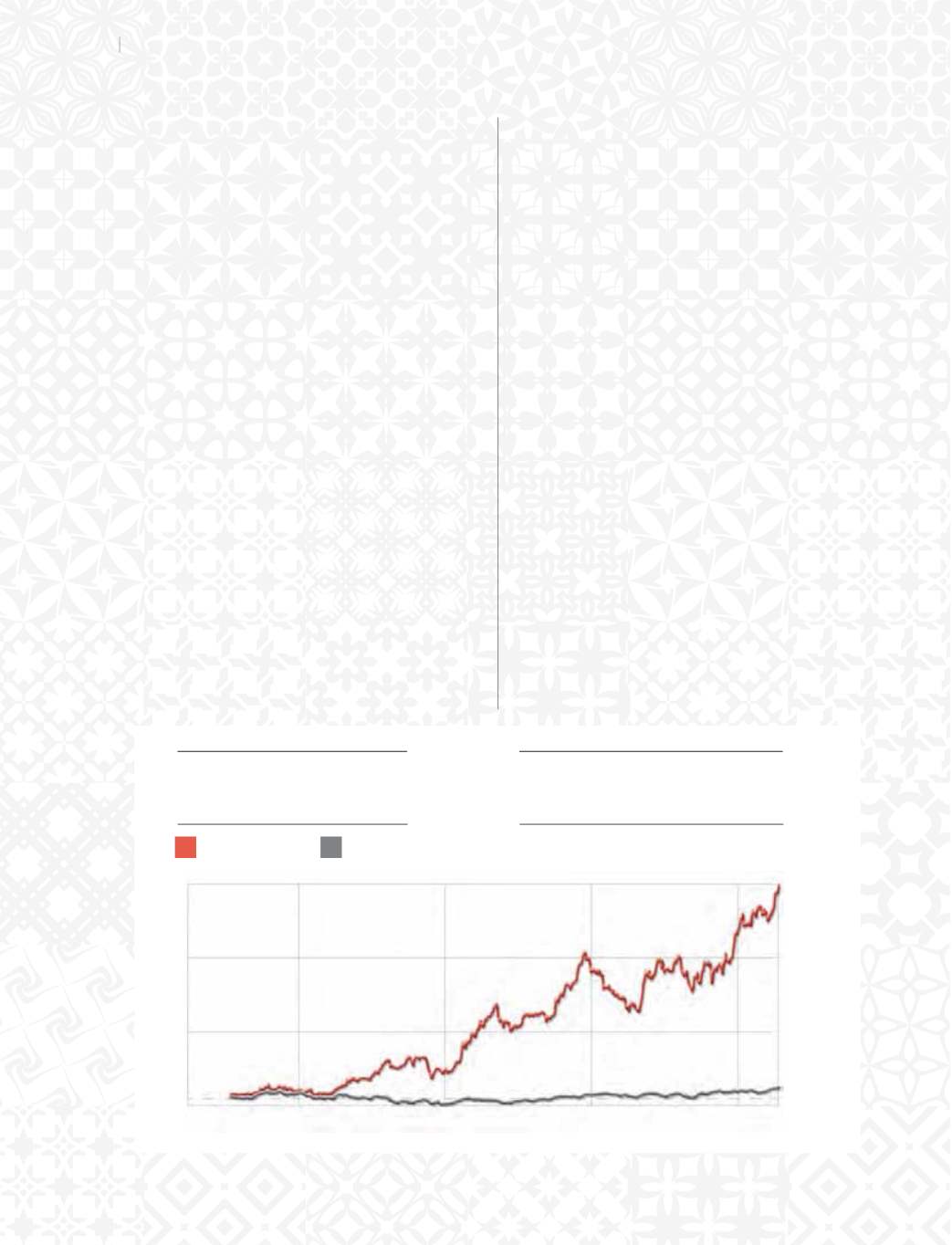
Operating cost and EBIDTA
An increase in business scale – more volumes, more
locations and more people – would justify an increase
in operational costs. Besides, increasing fuel costs and
rupee depreciation only added to the cost structure.
Under such circumstances, it would have been
reasonable to estimate a reduced operating profit.
At Kajaria, it was different. While fuel cost doubled
between 2009-10 and 2013-14, the rupee depreciated
sharply, the wage cost increased consistently over the
period under review; operating cost as a proportion
of net sales remained largely stable – at 83.82% in
2009–10, 85.91% in 2012-13 and 82.97% in 2013-14.
EBIDTA jumped more than two-fold between 2009-10
and 2013-14.
This increase in profitability was possible due to a
single-minded focus on creating a demand for value-
added tiles as well as a process realignment to increase
productivity and eliminate wastage.
Dividend and ploughback
The Company needs to tread a balance between
rewarding shareholders with a high dividend and
retaining surplus for capital-intensive projects. Generally,
one increases at the compromise of the other. At Kajaria,
this did not happen. For one, increasing volumes,
increased value-addition, optimised costs and reduced
interest outflow accelerated net profit growth faster
than others in the tile industry. Hence, while dividend
payout to shareholders grew 78.20% CAGR over the
five years (upto 2013-14), the ploughback of business
surplus leapfrogged 67.01% CAGR over the same period.
In 2013-14, the dividend payout at
`
264.54 million and
the surplus ploughback at
`
932.71 million were 20%
and 18% higher than the previous year’s allocations.
As a result, shareholder value doubled - incremental
income (through growing dividend) and growing wealth
(through outperformance of the share price with the
broader index).
Internal control and adequacy
The Company maintains a system of well-established
policies and procedures for internal control of operations
and activities.
The internal control systems consist of comprehensive
internal and statutory audits. Internal auditors
independently evaluate adequacy of internal controls
and concurrently audit majority of transactions in value
terms. The internal audit function is further strengthened
in consultation with Statutory Auditors for monitoring
statutory and operational issues. Independence of the
audit and compliance function is ensured by the direct
reporting of the internal audits to the Audit Committee
of the Board.
2010
2011
2012
2013
2014
Kajaria Ceramics
`
349
Market price
March 31, 2014
Returns
over 4 years
477.55%
SENSEX
22,386
March 31, 2014
Returns
over 4 years
26.53%
Kajaria Ceramics
SENSEX
28
Kajaria Ceramics Limited


